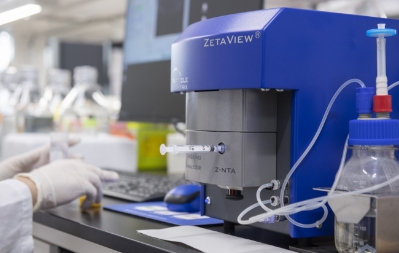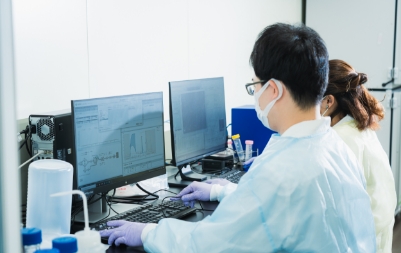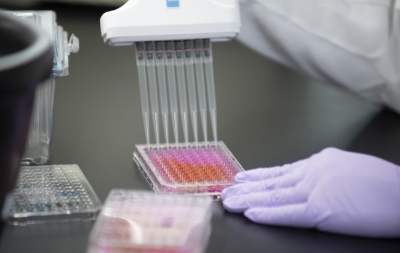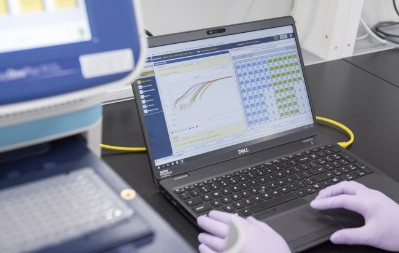Introduction to Exosomes
Exosomes are a type of extracellular vesicle (EV) primarily utilized for intercellular communication. These vesicles are found in many eukaryotic cells and are involved in various physiological processes [1]. This section introduces the characteristics and roles of exosomes.
Origin and Structure
Exosomes are membrane vesicles formed from a portion of intracellular vesicles called endosomes and released extracellularly. They are enclosed by a lipid bilayer containing various molecules derived from the cell. Their diameter ranges from 50 to 200 nanometers, about one-hundredth the size of a cell [2].
Composition
The lipid bilayer enclosing exosomes originates from the cell membrane of the secreting cell (hereafter referred to as the "secreting cell") and consists of components similar to the cell membrane. Various proteins exist on the surface of the lipid bilayer, some of which function as membrane surface markers. Notably, tetraspanins, four-transmembrane proteins, are abundant in exosomes. Tetraspanins include CD9, CD63, CD81, and others. The contents of exosomes are derived from the secreting cell, including nucleic acids (DNA, mRNA, microRNA), proteins, and more [3].
| Lipids composing the membrane | ceramide, cholesterol, sphingomyelin, etc. |
|---|---|
| Membrane surface markers | CD9, CD63, CD81, etc. |
| Contents | microRNA, mRNA, proteins, etc. |
Function: Intercellular Communication
After secretion from the secreting cell, exosomes travel through body fluids and deliver their contents to another cell (hereafter referred to as the "recipient cell"). They are thought to play a role in transmitting information by transporting components of the secreting cell as contents to the recipient cell. There are two processes by which the contents of exosomes are taken up by recipient cells [4].
One is endocytosis. In this process, the exosome attaches to the surface of the recipient cell, and the cell membrane envelops the exosome and internalizes it. At this point, the membrane surface markers of the exosome are thought to be involved in the selection and adhesion of the recipient cell. Subsequently, the contents are released from the internalized exosome within the recipient cell.
The other is membrane fusion. Membrane fusion is the process by which the membranes of the exosome and the recipient cell bind to form a single continuous membrane. Proteins and lipids mediating fusion are involved in this process.
The contents of the exosome that enter the recipient cell in this manner act as signals, and the recipient cell responds to those signals.
Medical Applications
| Tissue Regeneration and Healing | Exosomes contain information related to cell growth and repair, so therapeutic methods utilizing them to promote the regeneration of damaged tissues are being investigated [5]. Exosomes secreted by cells that have not undergone genetic modification or other alterations are referred to as "naïve exosome" or "native exosome". |
|---|---|
| Drug Delivery | By genetically modifying or otherwise altering the secreting cell, exosomes can be made to contain exogenous therapeutic components (proteins, genes, etc.). Additionally, by modifying the membrane surface, it is possible to change the organ tropism. Exosomes that have been functionally modified in this way to efficiently deliver specific therapeutic components to target tissues are referred to as "Engineered-EV" or "Designer EV." Research is being conducted to apply modified exosomes as a biocompatible drug delivery system (DDS) for cancer treatment, vaccines, and gene therapy [6]. |
| Cancer Diagnosis | Like normal cells, cancer cells also communicate with other cells via exosomes, which is known to be involved in cancer progression and metastasis. Analyzing exosomes contained in the blood or urine of cancer patients enables non-invasive evaluation of the presence and progression of cancer, and this is expected to contribute to early detection of cancer [7]. |
- 1. Colombo M, Raposo G, Théry C. Biogenesis, secretion, and intercellular interactions of exosomes and other extracellular vesicles. Annu Rev Cell Dev Biol. 2014;30:255-289.
- 2. Zhang H, Freitas D, Kim HS, et al. Identification of distinct nanoparticles and subsets of extracellular vesicles by asymmetric flow field-flow fractionation. Nat Cell Biol. 2018;20(3):332-343.
- 3. Kalluri R, LeBleu VS. The biology, function, and biomedical applications of exosomes. Science. 2020;367(6478):eaau6977.
- 4. Mathieu M, Martin-Jaular L, Lavieu G, Théry C. Specificities of secretion and uptake of exosomes and other extracellular vesicles for cell-to-cell communication. Nat Cell Biol. 2019;21(1):9-17.
- 5. Phinney DG, Pittenger MF. Concise Review: MSC-Derived Exosomes for Cell-Free Therapy. Stem Cells. 2017;35(4):851-858.
- 6. Zhan Q, Yi K, Qi H, et al. Engineering blood exosomes for tumor-targeting efficient gene/chemo combination therapy. Theranostics. 2020;10(17):7889-7905.
- 7. Xu R, Rai A, Chen M, Suwakulsiri W, Greening DW, Simpson RJ. Extracellular vesicles in cancer - implications for future improvements in cancer care. Nat Rev Clin Oncol. 2018;15(10):617-638.
Our Commitment to Safety and Reliability
As the clinical application of exosomes advances, there is growing concern about safety and regulation. We are making the following efforts to ensure the safe and secure clinical application of exosomes.
Manufacturing and Quality Control
Consistent manufacturing processes and thorough quality control are essential to ensure the quality of exosomes. We have established a rigorous manufacturing and quality control strategy in compliance with guidance issued by the PMDA (Pharmaceuticals and Medical Devices Agency) and FDA (Food and Drug Administration of the United States), as well as recommendations from ISEV (International Society for Extracellular Vesicles), JSEV (Japanese Society for Extracellular Vesicles) and the Japanese Society for Regenerative Medicine.






Conducting Non-clinical and Clinical Studies
Non-clinical and clinical studies are required to evaluate safety and efficacy. Through appropriately designed clinical trials, we aim to clarify the safety and efficacy of Exosome and ensure that our products are of a quality that not only patients, but also healthcare professionals and researchers can use with confidence. We have many researchers from pharmaceutical companies and PhD holders in medicine and pharmacy on our staff to ensure that our non-clinical and clinical trials proceed appropriately.
Regulatory Compliance and Ethical Review
Regulatory and ethical guidelines must be followed regarding the clinical application of exosomes. We will conduct our research and clinical applications in compliance with appropriate regulatory and ethical standards. We have a system in place to ensure compliance with relevant laws and regulations, with experts and external advisors on pharmaceutical laws and regulations. In addition, we hold regular Ethics Review Committee meetings to carefully examine ethical aspects of our work.
Disclosure and Transparency
We strive to ensure transparency by disclosing the latest information on Exosome and our initiatives through our website. By doing so, we aim to share information on the safety and efficacy of Exosomes with the public, researchers, and medical institutions, as well as to contribute to the industry as a whole.

